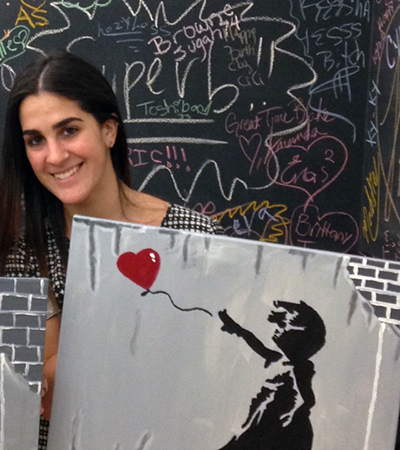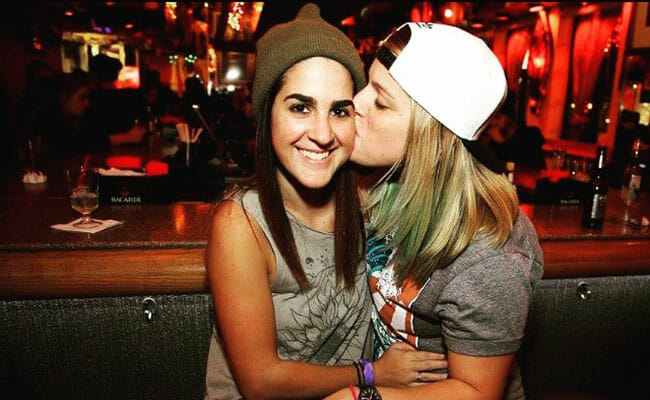Turning Her Pain into Purpose, Youth Advocate Works to Give a Voice to the Voiceless


At age 14, Samantha Gerson was placed in a residential treatment center; but instead of help and healing, she experienced physical and emotional abuse. At first, Samantha tried to shut away what had happened to her, but then she realized she could make a difference for other teens who felt alone and scared. Her experience motivated her to find ways to support other youth in need, and to eventually work with lawmakers to change public policy focused on institutional abuse and conversion therapy.
Now a graduate student in clinical social work at the University of Southern California, Samantha volunteers with at-risk youth and provides training to parents, schools and counselors around how to identify institutional abuse. She also advocates for policy change at the local, state and federal level, and is running for a seat on the Board of Education in Los Angeles in 2019.
We spoke with Samantha about her commitment to helping at-risk youth and what drives her to be “a voice for the voiceless.”
When did you decide to start volunteering to support at-risk youth?
I started as a teenager; my mom was a major advocate for me going out and helping those who needed help. I unfortunately was institutionalized in a residential treatment center when I was 14, which gave me an inside look at the atrocities that happen behind their closed doors. As soon as I got out, I realized this is what I want to do with my life. I want to make it so nobody ever has to experience what I have experienced. I want to give the voiceless a voice.
How did you get started?
At 16, it can feel like there is not much you can do. But, I found the Trevor Project and started working to support suicidal LGBTQ youth. I was part of their first youth advisory council, which was just a group of adolescents who identified with the community, or identified as an ally. Together we worked on various projects that would ideally make a difference in LGBTQ communities nationwide. We helped create a site for LGBTQ teens to go chat with one another. Sort of like a Facebook for kids. At the time, it was called Trevor Chat. From there, I just spent so much time doing things with Trevor Project, they asked if I wanted to join them as an intern and I of course obliged. Then I eventually started overseeing the entire youth advisory council.

How did your activism evolve?
As I grew older, I had more access and ability to get involved. I found myself involved in social work, and interned with various communities. Since then, I have been given many chances to work with victims of institutional abuse and conversion therapy. I have sort of done it in any way possible. Since I am not a licensed social worker yet, most of my work is very casual and very low-key. I write reviews and research on any site that I can, and I write blogs regarding specific institutions.
I also go to conferences, schools and agencies to do trainings and workshops on how to spot abuse in institutions, as well as how to prevent it. For example, “if you have a neighbor whose kid is in treatment, here is how you know if it is abusive or not…” Additionally, I talk a lot about how you can advocate for these vulnerable adolescent populations. I have recently gotten into macro work at a policy level. There are a lot of new bills coming out, especially in L.A. with Rep. Adam Schiff. He is a strong advocate for protecting institutionalized youth. He introduced a federal bill that would prohibit the practice of conversion therapy. Being involved in policy and being a voice for this has been really powerful for me.
How have you been involved in changing public policy?
I am very open and out about my experiences in institutions. I will speak to whomever will listen, whether it is a congressman or an average lay-person, about my experience and my testimony. I also have a presentation that I created that I share with lawmakers and educators. Right now I volunteer with dual-status youth, foster youth who are involved in juvenile delinquency court, and my supervisor is allowing me to do a training at the Children’s Law Center in the near future.
I am fortunate enough to be able to do this work more on a level where I can reach the people who can make systematic changes. I cannot make the change myself yet, but I can help educate others so they better understand the issue and stop future abuse.
What inspired you to run for office?
I feel like the voiceless need a voice. I remember being a teenager and feeling like no one listened. There was no person who represented me, or looked like me, or sounded like me, who was in office wanting to create change. I want to be that person who a struggling 16-year-old girl goes, “I’m in a tough spot, and no one cares … but at least she is speaking my truth. She is saying what needs to be said.” I feel like maybe I can have that impact on someone.
How can people get involved to support LGBT youth and other vulnerable at-risk youth in their community? What advice do you have for them?
I recommend people check out the organization Survivors of Institutional Abuse. A really amazing person named Jodi Hobbs founded it. She has done so much and this website is a great resource. It connects you to other survivors, it has information-backed statistics, and provides any other information you might want. It will even tell you how you can help locally. If you are an educator or counselor, or you work at a law office and are interested in training, please reach out to me. I love to help educate others on this topic. You can connect with me on LinkedIn.
